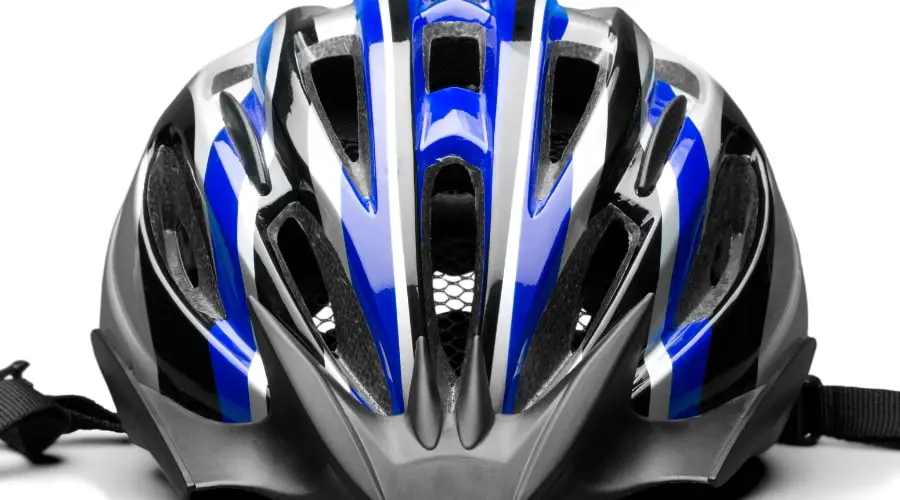Cycling is a popular and healthy mode of transportation, and it’s essential to ensure the safety of cyclists on the road. One of the most debated topics regarding cycling safety is whether wearing a crash helmet should be made mandatory by law. In this article, we will explore the importance of bicycle helmets, the current laws in different countries, and the arguments for and against mandatory helmet laws.

The Importance of Bicycle Helmets
Preventing Head Injuries
Wearing a bicycle helmet can significantly reduce the risk of head injuries in the event of an accident. According to research, helmets can reduce the risk of head injury by up to 85%. A properly fitted helmet can cushion the impact and distribute the force, thereby protecting the skull and brain from severe damage.
Setting an Example for Children
Adults wearing helmets set a good example for children, promoting a culture of safety and responsible cycling. Children are more likely to wear helmets if they see their parents and other adults wearing them.
Bicycle Helmet Laws Around the World
United States
In the United States, bicycle helmet laws vary from state to state and even between local jurisdictions. Some states, like California, require helmets for cyclists under the age of 18, while others have no statewide helmet laws at all.
Europe
European countries have differing bicycle helmet laws. In countries like Sweden and Slovenia, helmets are mandatory for children under a certain age, while other countries like Germany and the Netherlands have no mandatory helmet laws.
Australia
Australia has some of the strictest bicycle helmet laws in the world. All cyclists, regardless of age, are required to wear helmets while riding.
Other Countries
Many other countries have either age-specific or no-helmet laws. It’s essential to research the specific laws of the country you are cycling in.
Arguments for and against Mandatory Helmet Laws
Pros of Mandatory Helmet Laws
Proponents of mandatory helmet laws argue that helmets save lives and reduce the risk of head injuries. They also emphasize the potential benefits to public health, as reducing head injuries can ease the burden on healthcare systems.
Cons of Mandatory Helmet Laws
Opponents of mandatory helmet laws claim that such laws may discourage people from cycling altogether, leading to decreased physical activity and increased reliance on cars. They also argue that the focus should be on creating safer cycling infrastructure rather than enforcing helmet use.
How to Choose the Right Bicycle Helmet
When selecting a bicycle helmet, it’s essential to consider the following factors:
- Fit and comfort: Make sure the helmet fits snugly on your head without being too tight. Look for adjustable straps and padding that can be customized for optimal comfort.
- Safety certification: Choose a helmet that meets the safety standards of your region. In the United States, look for helmets that meet the Consumer Product Safety Commission (CPSC) standards. In Europe, helmets should be certified according to the European Committee for Standardization (CEN) standards.
- Ventilation: Good ventilation is crucial for comfort during long rides. Look for helmets with multiple vents to keep your head cool.
- Visibility: Helmets with bright colors and reflective elements can help increase your visibility to other road users, especially in low-light conditions.
How to Properly Wear a Bicycle Helmet
To ensure maximum protection, follow these steps to wear a bicycle helmet correctly:
- Position the helmet level on your head, with the front edge about an inch above your eyebrows.
- Adjust the side straps to form a “V” shape under your ears.
- Tighten the chin strap, ensuring that no more than two fingers can fit between the strap and your chin.
- Make sure the helmet does not wobble or move excessively on your head. If it does, readjust the straps and padding for a better fit.

The Role of Education and Awareness
In addition to laws, education, and awareness campaigns play a crucial role in promoting bicycle helmet use. These campaigns can target schools, community organizations, and cycling clubs to encourage safe cycling habits, emphasizing the importance of wearing a helmet regardless of the law.
Frequently Asked Questions
1. Do all countries have mandatory bicycle helmet laws?
No, bicycle helmet laws vary by country. Some countries require helmets for specific age groups, while others have no mandatory helmet laws at all.
2. Can I be fined for not wearing a bicycle helmet?
In countries with mandatory helmet laws, you can be fined for not wearing a helmet. The fines vary depending on the country and specific regulations.
3. How do I know if my bicycle helmet fits correctly?
A properly fitting helmet should be snug on your head without being too tight. The front edge should be about an inch above your eyebrows, and the side straps should form a “V” shape under your ears.
4. How often should I replace my bicycle helmet?
It’s recommended to replace your bicycle helmet every three to five years or immediately after a crash, even if there’s no visible damage.
5. Are there any alternatives to traditional bicycle helmets?
There are innovative alternatives, such as collapsible helmets and airbag helmets, designed for cyclists who prefer a more compact or discrete option. However, always ensure that the helmet meets the safety standards of your region before purchasing.
Conclusion
While bicycle helmet laws vary across the globe, wearing a helmet can significantly reduce the risk of head injuries and save lives. It’s essential to choose a suitable helmet and wear it correctly to ensure optimal protection. Ultimately, education and awareness campaigns, coupled with safe cycling infrastructure, can help promote a culture of responsible cycling and increase helmet use, regardless of the legal requirements.
Helmetslab is a website that focuses on providing in-depth reviews and information about different types of helmets, including motorcycle helmets and others helmets. I am writing a post with proper research on the info that helps helmet users.

